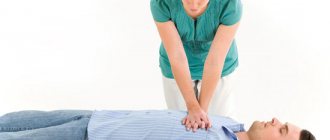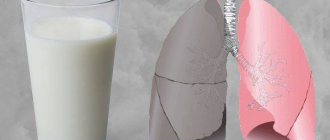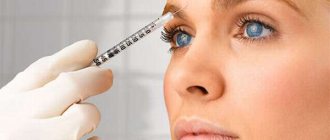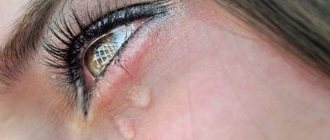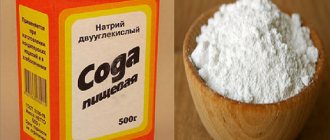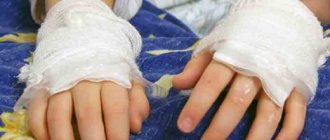Each of us is not immune from a situation where a loved one or just a passer-by receives an electric shock or heat stroke, which leads to respiratory arrest, and often to the cessation of heart function. In such a situation, a person’s life will depend only on the instant reaction and assistance provided. Already schoolchildren should know what artificial heart massage and artificial respiration are, with the help of which you can bring the victim back to life. Let's figure out what these techniques are and how to perform them correctly.
Causes of respiratory arrest
Before you deal with first aid, you need to find out in what situations breathing may stop. The main reasons for this condition include:
- strangulation, which is a consequence of carbon monoxide inhalation or attempted suicide by hanging;
- drowning;
- electric shock;
- severe cases of poisoning.
These reasons are most common in medical practice. But you can name others - all sorts of things happen in life!
Cardiac arrest - how to check if it is working?
To check if the heart is working, you need to:
- Check for a pulse - place two fingers on your neck under your cheekbones;
- Check for breathing - place your hand on the chest and see if it rises, or put your ear to the heart area and listen for beats from its work;
- Place a mirror on your mouth or nose - if it fogs up, it means the person is breathing;
- Lift the patient's eyelids and shine a flashlight on the pupil - if the pupils are dilated and do not respond to light, the heart has stopped.
If the person is not breathing, begin performing artificial respiration and chest compressions.
Why is artificial ventilation necessary?
Of all the organs in the human body, the brain needs oxygen the most. Without it, cell death begins in about 5-6 minutes, which will lead to irreversible consequences.
If first aid, artificial respiration and cardiac massage are not provided in a timely manner, then the person who has returned to life can no longer be called full-fledged. The death of brain cells will subsequently lead to the fact that this organ will no longer be able to function as before. A person can turn into a completely helpless creature that will require constant care. It is for this reason that the quick reaction of others who are ready to provide first aid to the victim is very important.
Pericardial stroke
If clinical death occurs, a pericardial stroke can be applied. It is such a blow that can start the heart, as there will be a sharp and strong impact on the sternum.
To do this, you need to clench your hand into a fist and strike with the edge of your hand in the area of the heart. You can focus on the xiphoid cartilage; the blow should fall 2-3 cm above it. The elbow of the hand that will strike should be directed along the body.
Often this blow brings victims back to life, provided that it is delivered correctly and in a timely manner. The heartbeat and consciousness can be restored instantly. But if this method does not restore function, artificial ventilation and chest compressions should be immediately applied.
Features of adult resuscitation
How to perform artificial respiration and cardiac massage is taught in biology classes in secondary schools. Only most people are sure that they will never find themselves in such a situation, so they do not particularly delve into the intricacies of such manipulations.
Finding themselves in such a situation, many get lost, cannot find their way, and precious time is wasted. Resuscitation of adults and children has its differences. And they are worth knowing. Here are some features of resuscitation measures in adults:
- If the victim is still conscious and can speak, then you need to ask what happened.
- There are cases when the victim refuses outside help, for unknown reasons. Then, if there are life-threatening factors, you need to call the police and call an ambulance.
- If the victim does not react to you in any way and is unconscious, then you need to immediately begin resuscitation measures.
- If a person can hear his breathing, he must be placed on his side.
- When assisting a pregnant woman, she should be turned on her left side, since the inferior vena cava runs along the right side, and if squeezed, blood circulation may be impaired.
When all these factors are taken into account, resuscitation measures can begin, if necessary.
External massage for a baby
Carrying out indirect massage for babies is as follows:
- Shake the baby gently and say something loudly.
- Clear your airways. If the baby is choking or has something stuck in the airway, give 5 chest thrusts.
- Try to regain your breathing.
- Restore blood circulation.
- Alternate compressions and artificial respiration. After five presses, make one breathing movement. In this way, you can do about 100 presses and 20 breathing movements. Do not stop NMS until the following occurs:
- the baby will begin to breathe on his own;
- he will have a pulse;
- doctors will arrive;
- You will get tired.
His reaction will allow you to make sure that you are not going to give NMS to a conscious baby. Quickly check for injuries. Focus on the head and neck as you will be manipulating these parts of the body. Call an ambulance.
If possible, have someone else do this. If you are alone, do NMS for one minute, and only then call professionals.
To do this, place two fingers between his nipples and push quickly in an upward direction. If you are concerned about head or neck injury, move your baby as little as possible to reduce the risk of paralysis.
If the baby is unconscious, open the baby's airway by placing one hand on the forehead and gently lifting the chin with the other to allow air to flow. Do not press on the soft tissue under the chin, as this may block the airway.
The mouth should be slightly open. Make two mouth-to-mouth breathing movements. To do this, inhale and tightly close the baby's mouth and nose with your mouth. Gently exhale some air (a baby's lungs are smaller than an adult's). If the chest rises and falls, the amount of air appears to be appropriate.
If the baby does not start breathing, move his head slightly and try again. If nothing has changed, repeat the airway opening procedure. After removing objects blocking the airway, check your breathing and pulse.
Continue NMS if necessary. Continue artificial respiration with one breath every 3 seconds (20 breaths per minute) if the infant has a pulse.
Check the pulse at the brachial artery. To find it, feel the inside of your upper arm, above the elbow. If there is a pulse, continue artificial respiration, but do not compress the chest.
If the pulse cannot be felt, begin to compress the chest. To determine the position of your baby's heart, draw an imaginary horizontal line between the nipples.
Place three fingers below and perpendicular to this line. Raise your index finger so that your two fingers are one finger below the imaginary line. Press them on the sternum so that it drops 1-2.5 cm.
Actions before artificial respiration
Quite often a person loses consciousness, but breathing remains. In such a situation, it is necessary to take into account that in an unconscious state all the muscles of the body relax. This also applies to the tongue, which, under the influence of gravity, slides down and can close the larynx, leading to suffocation.
The first step when you find a person unconscious is to take measures to ensure the free flow of air through the larynx. You can put the person on his side or throw his head back and open his mouth slightly, pressing on the lower jaw. In this position there will be no danger that the tongue will completely block the larynx.
After this, you need to check whether spontaneous breathing has resumed. Almost everyone knows from films or biology lessons that to do this, it is enough to bring a mirror to your mouth or nose - if it fogs up, it means the person is breathing. If you don't have a mirror, you can use your phone screen.
It is important to remember that while all these checks are being carried out, the lower jaw must be supported.
If the victim is unable to breathe due to drowning, strangulation with a rope, or a foreign body, it is necessary to urgently remove the foreign object and clean the oral cavity if necessary.
If all the procedures have been carried out, and breathing has not been restored, it is necessary to immediately perform artificial respiration and cardiac massage if it has stopped working.
How to determine if resuscitation is being performed correctly
Signs of effectiveness when following the rules for performing artificial respiration are as follows:
- When artificial respiration is performed correctly, you may notice the chest moving up and down during passive inspiration.
- If the movement of the chest is weak or delayed, you need to understand the reasons. Probably a loose fit of the mouth to the mouth or nose, a shallow breath, a foreign body preventing the air from reaching the lungs.
- If, when you inhale air, it is not the chest that rises, but the stomach, then this means that the air did not go through the airways, but through the esophagus. In this case, you need to press on the stomach and turn the patient's head to the side, as vomiting is possible.
The effectiveness of cardiac massage also needs to be checked every minute:
- If, when performing an indirect cardiac massage, a push appears on the carotid artery, similar to a pulse, then the pressing force is sufficient for blood to flow to the brain.
- If resuscitation measures are performed correctly, the victim will soon experience heart contractions, blood pressure will rise, spontaneous breathing will appear, the skin will become less pale, and the pupils will narrow.
All actions must be completed for at least 10 minutes, or better yet, before the ambulance arrives. If the heartbeat persists, artificial respiration must be performed for a long time, up to 1.5 hours.
If resuscitation measures are ineffective within 25 minutes, the victim has cadaveric spots, a symptom of a “cat” pupil (when pressure is applied to the eyeball, the pupil becomes vertical, like a cat’s) or the first signs of rigor - all actions can be stopped, since biological death has occurred.
The sooner resuscitation is started, the greater the likelihood of a person returning to life. Their correct implementation will help not only restore life, but also provide oxygen to vital organs, prevent their death and disability of the victim.
Rules for performing artificial respiration
If all the reasons that caused the respiratory arrest have been eliminated, but it has not recovered, then it is urgently necessary to begin resuscitation. Artificial respiration can be performed using different methods:
- inhaling air into the victim’s mouth;
- blowing into the nose.
The first method is most often used. Unfortunately, not everyone knows how to perform artificial respiration and cardiac massage. The rules are quite simple, you just need to follow them exactly:
- call an ambulance immediately;
- the victim must be placed on his back, but there must be a hard surface under him;
- open the patient’s mouth and tilt his head slightly back;
- pinch the victim’s nose with two fingers;
- Having drawn air into your lungs, you should exhale it into the victim’s mouth, pressing it tightly to his lips;
- blowing must be done strongly, but not sharply, not jerkily, otherwise the diaphragm may not open and air will enter the stomach, which can provoke vomiting;
- the number of injections is 10-12 times per minute;
- During inhalations, it is necessary to monitor the chest - it should rise; if this is not the case, then the air gets in the wrong place;
- Even if the victim begins to regain consciousness, artificial ventilation must be continued: 1 breath every 6 seconds until an ambulance arrives or the person fully wakes up.
If the victim, after all the efforts, does not come to his senses and does not begin to breathe on his own, then he will have to urgently perform a closed heart massage and artificial respiration at the same time.
Main mistakes when performing resuscitation actions
All errors encountered during CPR can be divided into 2 large groups. Tactical – delay in CPR or failure to assess the effectiveness of the measures taken:
- Waste of time on unnecessary diagnostic activities.
- Untimely stopping of resuscitation efforts.
Methodological - incorrect order or technique of performing artificial ventilation of the lungs or chest compressions:
- Providing assistance on uneven or soft surfaces.
- Incorrect position of the rescuer's upper extremities: bending the arms at the elbow joint, lifting the palms from the sternum, applying the entire surface of the palm instead of its base.
- Violation of the frequency or ratio of compressions and air inhalations: the pace of chest compressions is too slow, changing the recommended ratio of inhalations and compressions (30:2) up or down, breaks of more than 15 seconds for inhalations.
- Changes in the depth of compression or incorrect ventilation technique: insufficient or excessive pressure on the chest, inhalation too short, massaging the heart at the moment of inhalation (occurs when performing mechanical ventilation by two rescuers).
Another common mistake is inadequate monitoring of the patient’s condition and one’s own actions immediately at the time of resuscitation. Thus, control over the expansion of the chest should always be carried out simultaneously with inhalation of air into the oral cavity. If the lungs do not expand at the moment of inhalation, the rescuer is performing mechanical ventilation incorrectly or there is an obstruction to air flow in the airway. During artificial cardiac massage, it is necessary to monitor both your hands (avoid bending your elbows or lifting them from the sternum) and the depth of compression.
Further rehabilitation of the person
Even after successful resuscitation measures, 90-100% of victims develop post-resuscitation illness. It is a cascade of pathophysiological processes resulting from temporary cessation of blood circulation and subsequent restoration of normal blood flow. Post-resuscitation illness includes several syndromes:
- signs of brain damage (coma, seizures, cognitive-mnestic disorders);
- decreased contractile function of the heart;
- activation of the immune and blood coagulation systems;
- exacerbation of existing chronic diseases;
- multiple organ failure.
It is the severity of the manifestations of post-resuscitation illness that determines further treatment and rehabilitation tactics. In the early recovery period, mechanical ventilation and drugs that improve the trophism and contractility of the heart are used. In the presence of convulsive syndrome, the use of anticonvulsants (anticonvulsants) is indicated. Metabolic correction is achieved by massive infusion-transfusion therapy.
An important role in the rehabilitation period is assigned to etiotropic and pathogenetic methods of therapy. They are aimed at eliminating the factor that contributed to cardiac arrest. In case of heart pathology, percutaneous coronary interventions are performed, arterial stenting is performed, and medications are prescribed to correct blood pressure or stop arrhythmias. Other causes of sudden cardiac arrest (increased potassium levels in the blood, acidotic conditions) are eliminated by metabolic correction and transfusion of blood replacement solutions.
Mouth-to-nose artificial respiration technique
This method of resuscitation is considered the most effective, as it reduces the risk of air entering the stomach. The procedure is as follows:
- It is necessary to fix the victim’s head, holding the forehead with one hand and the chin with the other.
- The mouth must be closed tightly so that the air blown in does not escape through it.
- After a deep breath, you should intensively blow air into the victim’s nose.
- It is necessary to ensure that the chest rises, which indicates the correct execution. After a few breaths, you need to check if a pulse appears.
Most often, if all manipulations are performed correctly and in a timely manner, it is possible to bring the victim back to life.
What is unacceptable during external cardiac massage
How to do a massage correctly To achieve the exceptional effectiveness of indirect cardiac massage, namely the resumption of normal blood circulation and the air exchange process, and bringing a person to life through tactile acupressure on the heart through the chest, you need to follow some simple recommendations:
- Act confidently and calmly, do not fuss.
- Due to lack of self-confidence, do not leave the victim in danger, but be sure to carry out resuscitation measures.
- Carry out preparatory procedures quickly and thoroughly, in particular, freeing the oral cavity from foreign objects, tilting the head to the position necessary for artificial respiration, freeing the chest from clothing, and a preliminary examination to detect penetrating wounds.
- Do not tilt the victim’s head back excessively, as this may create obstacles to the free flow of air into the lungs.
- Continue to resuscitate the victim’s heart and lungs until doctors or rescuers arrive.
In addition to the rules for performing indirect cardiac massage and the specifics of behavior in an emergency situation, do not forget about personal hygiene measures: you should use disposable napkins or gauze during artificial respiration (if available).
The phrase “saving a life is in our hands”, in cases where it is necessary to immediately perform chest compressions on an injured person who is on the verge of life and death, takes on a direct meaning.
When carrying out this procedure, everything is important: the position of the victim and especially his individual parts of the body, the position of the person performing chest compressions, clarity, measuredness, timeliness of his actions and absolute confidence in a positive outcome.
The effect of cardiac muscle massage
Most often, artificial heart massage and artificial respiration are combined when providing first aid. Almost everyone can imagine how such manipulations are carried out, but not everyone knows what their meaning is.
The heart in the human body is a pump that vigorously and constantly pumps blood, delivering oxygen and nutrients to cells and tissues. When performing an indirect massage, pressure is applied to the chest, and the heart begins to contract and push blood into the vessels. When the pressure stops, the myocardial chambers straighten and venous blood enters the atria.
In this way, blood flows through the body, which carries everything the brain needs.
Technique for performing ID
Every adult should know how to do artificial respiration correctly.
Depending on the type, there is a special order of execution:
- Mouth to mouth. Kneel down on the right side of the victim, support his head with both hands in an upturned position. Cover his mouth with a handkerchief, gauze or any piece of cloth. When performing this manipulation, the risk of morbidity from infectious diseases, hepatitis B, C, herpes, and tuberculosis increases.
Using tissue will significantly reduce the risk of infection if a person is sick. Then close the victim’s nose so that the air does not immediately come back out, but reaches the lungs. After this, place your lips tightly against the person’s mouth and exhale slowly.Despite the fact that more carbon dioxide is exhaled than inhaled, the exhalation still contains enough oxygen to carry out such resuscitation measures. Make 2 exhalations in a row with an interval of several seconds. There is no need to exhale too much - such an amount of air can lead to overdistension of the stomach.
- Mouth to nose. It is a much more complex and less effective method when the rescuer’s air is exhaled at the same frequency into the victim’s nasal passages. This alternative method is used if mouth-to-mouth ID is not possible.
When performed by two people, there is a division of responsibilities - one does ID, and the second performs indirect cardiac massage. You cannot perform activities simultaneously, only when alternating.
Basic rules for conducting ID:
- you need to start as quickly as possible, there is no time to think;
- before performing ID, 30 chest compressions are performed;
- Before carrying out, be sure to check the patency of the respiratory tract;
- the victim’s nostrils are pinched with fingers;
- The lips are pressed against the victim’s mouth as tightly as possible, and a normal exhalation is made. The victim's chest should fill and move;
- within a few seconds, take 2 such artificial breaths and proceed to chest compressions;
- For each artificial breath there are about 15 chest compressions.
In the hospital, a more effective procedure is used - intubation. When an experienced specialist, holding the tongue (with a metal spatula) with one hand, inserts the endotracheal tube into the trachea with the other to ensure patency.
This is the basic standard of care. A number of complications (accidental intubation of the esophagus, damage to the pharyngeal mucosa, teeth or dentures) are incommensurate with the effectiveness of the method. The tube is fixed with adhesive tape. Over time, the tube is removed.
Algorithm for cardiac resuscitation
To make cardiac resuscitation more effective, it is necessary to lay the victim on a hard surface. In addition, you will have to unbutton your shirt and other clothes. The belt on men's trousers must also be removed.
Next, you need to determine as accurately as possible the point on the chest on which pressure should be applied. There are two methods for this:
- the point is located at the intersection of the internipple line and the middle of the sternum;
- you need to step back from the xiphoid process on the chest to the thickness of two fingers towards the head - this will be the desired point.
Once the desired pressure point has been determined, resuscitation measures can begin.
When to stop resuscitation?
It should be noted that pulmonary-cardiac resuscitation should be continued until the medical team arrives. But if the heartbeat and lung function are not restored within 15 minutes of resuscitation, then they can be stopped. Namely:
- when there is no pulse in the area of the carotid artery in the neck;
- breathing is not performed;
- dilated pupils;
- the skin is pale or bluish.
And of course, cardiopulmonary resuscitation measures are not carried out if a person has an incurable disease, for example, oncology.
Source: “neotlozhnaya-pomosch.info, vseopomoschi.ru, primamunc.ru, moeserdtse.ru, otravleniya.net, zdravoe.com, vselekari.com, dlyaserdca.ru, winalite.cc, 1poserdcu.ru”
Cardiac massage and artificial respiration techniques
The sequence of actions during resuscitation procedures should be as follows:
- kneel near the victim and take a stable position;
- find the desired point for pressure;
- place your palms crosswise on the sternum, connecting your fingers and straightening your elbows;
- perform 30 strong compressions, during which the chest should drop 4-5 centimeters;
- after pressing, you need to take 2 breaths;
- repeat in this rhythm until the ambulance arrives, or until the victim shows signs of life.
It is necessary to take into account that performing artificial respiration and chest compressions requires considerable effort, so it is advisable to have someone else nearby who can relieve you and provide assistance.
How to do indirect cardiac massage
The technique of performing indirect cardiac massage is simple, but requires the right actions.
Why is indirect cardiac massage impossible if the victim is lying on something soft? In this case, the pressure will be released not on the heart, but on the pliable surface.
Very often, ribs are broken during chest compressions. There is no need to be afraid of this, the main thing is to revive the person, and the ribs will grow together. But you need to take into account that broken ribs are most likely the result of incorrect execution and you should moderate the pressing force.
| Age of the victim | How to press | Pressing point | Depth of pressing | Velocity | Inhalation/pressure ratio |
| Age up to 1 year | 2 fingers | 1 finger below the nipple line | 1.5–2 cm | 120 and more | 2/15 |
| Ages 1–8 years | 2 fingers from the sternum | 100–120 | |||
| Adult | 2 hands | 2 fingers from the sternum | 5–6 cm | 60–100 | 2/30 |
Features of providing assistance to children
Resuscitation measures for young children have their own differences. The sequence of artificial respiration and cardiac massage in babies is the same, but there are some nuances:
- it is necessary to begin resuscitation measures with 5 breaths, since in children cardiac arrest most often occurs as a result of cessation of breathing;
- then the sequence of actions is followed: press on the chest 30 times and take two breaths;
- You need to press gently on one side; for infants, you need to do this with two fingers.
- When inhaling, you need to cover the baby’s mouth and nose with your mouth;
- if there are no assistants nearby, then an ambulance should be called 1 minute after the start of resuscitation measures.
Features and differences of cardiopulmonary resuscitation in children, contraindications
The technique for carrying out this procedure differs significantly between (up to one year old) and preschool children. The difference lies directly in the specifics of pressing on the chest.
In infants, indirect cardiac massage is performed with only two fingers: the middle and ring fingers. The frequency of massage pressure in infants should be increased to 120 per minute. The causes of cardiac and respiratory arrest can be not only injuries or accidents. A baby's heart may stop due to congenital diseases or sudden death syndrome. In preschool children, only the base of one palm is involved in the process of cardiac resuscitation.
Signs of effective help
When performing cardiopulmonary resuscitation, you need to know the signs by which you can judge its success. If artificial respiration and external cardiac massage are performed correctly, then, most likely, after some time the following signs can be observed:
- the pupils react to light;
- the skin becomes pinkish in color;
- the pulse is felt in the peripheral arteries;
- the victim begins to breathe on his own and regains consciousness.
If artificial cardiac massage and artificial respiration do not produce results within half an hour, then resuscitation is ineffective and must be stopped. It should be noted that the earlier cardiopulmonary resuscitation is started, the more effective it will be in the absence of contraindications.
Indications for the procedure
The person is unconscious, does not move independently, does not answer questions, the pulse in the carotid artery cannot be felt, the victim may be having convulsions - this is a list of indications for artificial respiration.
Stoppage of blood circulation and breathing can be caused by various reasons:
- blockage or compression of the airways;
- electric shock;
- water getting into the lungs;
- getting injured.
Causes of circulatory arrest
In addition to environmental factors, cardiac arrest can be caused by heart diseases:
- cardiomyopathy;
- coronary syndrome;
- Brugada syndrome;
- ventricular fibrillation;
- aortic dissection;
- aneurysm rupture;
- mitral valve prolapse;
- sick sinus syndrome;
- WPW syndrome.
Contraindications to resuscitation
Artificial heart massage and artificial respiration set the goal of returning a person to a full life, and not just delaying the time of death. Therefore, there are situations when such resuscitation is pointless:
- if cardiac arrest has become the natural end of a long and serious illness;
- extreme degree of chronic heart failure;
- renal, hepatic or respiratory failure;
- signs of futility of resuscitation measures;
- the presence of visible injuries that are incompatible with life;
- signs of biological death, which usually begin to appear after 1-3 hours, depending on the air temperature.
The rules for artificial respiration and chest compressions suggest that resuscitation begins immediately after cardiac arrest is detected. Only in this case, if there are no contraindications, can we hope that the person will return to a full life.
How long does it take to resuscitate a person?
Resuscitation measures should be carried out for the victim for at least 10 minutes or exactly as long as it takes for signs of life to appear in the person, and ideally until the doctors arrive. If the heartbeat continues and respiratory function is still impaired, mechanical ventilation must be continued for quite a long time, up to an hour and a half. The likelihood of a person returning to life in most cases depends on the timeliness and correctness of resuscitation actions, however, there are situations when this cannot be done.
Symptoms of biological death
If, despite all efforts to provide first aid, they remain ineffective for half an hour, the victim’s body begins to become covered with cadaveric spots, the pupils, when pressed on the eyeballs, take on the appearance of vertical slits (“cat pupil syndrome”), and signs of rigor also appear, which means further actions are meaningless. These symptoms indicate the onset of biological death of the patient.
No matter how much we would like to do everything in our power to bring a sick person back to life, even qualified doctors are not always able to stop the inevitable passage of time and give life to a patient doomed to death. This is, unfortunately, life, and you just have to come to terms with it.
Artificial respiration and indirect cardiac massage are resuscitation actions that are carried out during first aid to the victim to restore respiratory function and the functioning of the heart. Another name for these actions is cardiopulmonary resuscitation.
When a person loses consciousness due to any illness or injury and respiratory function and heartbeat stop, this condition is called clinical death.
It lasts about 5-6 minutes after respiratory and cardiac functions stop.
It is at this time that, using the correct algorithm for cardiopulmonary resuscitation, the victim can be brought back to life. As more time passes, brain cells begin to die, and these consequences are irreversible. Pulmonary-cardiac measures are needed to provide the body with oxygen.
Cardiopulmonary measures are carried out due to the onset of certain reasons. The most common of them:
But respiratory arrest can also occur due to ordinary fainting, which can manifest itself as a symptom of any disease.
Pulmonary-cardiac resuscitation is contraindicated if the victim has suffered a severe head injury, which is accompanied by brain damage, and if the cause of unconsciousness is a fracture of the chest bones.
In the second case, you can damage the heart itself with broken bones; to prevent this from happening, you must first palpate the sternum of an adult.
Rescue Tips
We figured out how to do artificial respiration and cardiac massage. The rules are quite simple and clear. Don't be afraid that you won't succeed. Here are some tips to help save a person's life:
- If things don’t work out with artificial respiration, then you can and should continue doing cardiac massage.
- In most adults, breathing stops due to the cessation of myocardial function, so massage is more important than artificial respiration.
- There is no need to worry that you will break the victim's ribs as a result of excessive pressure. Such an injury is not fatal, but a person’s life will be saved.
Each of us may need such skills at the most unexpected moment, and it is very important in such a situation not to get confused and do everything possible, because life often depends on the correctness and timeliness of actions.
Main signs of cardiac arrest
Cardiac arrest is considered a sudden and complete cessation of cardiac activity, which in certain cases can occur simultaneously with the bioelectrical activity of the myocardium. The main reasons for stopping are the following:
- Ventricular asystole.
- Paroxysmal tachycardia.
- Ventricular fibrillation, etc.
Among the predisposing factors are:
- Smoking.
- Age.
- Alcohol abuse.
- Genetic.
- Excessive stress on the heart muscle (for example, playing sports).
Sudden cardiac arrest sometimes occurs due to injury or drowning, possibly due to an obstructed airway as a result of electric shock.
In the latter case, clinical death inevitably occurs. It should be remembered that the following signs can signal sudden cardiac arrest:
- Consciousness is lost.
- Rare convulsive sighs appear.
- There is a sharp pallor on the face.
- The pulse disappears in the area of the carotid arteries.
- Breathing stops.
- The pupils dilate.
Indirect cardiac massage is performed until independent cardiac activity is restored, among the signs of which are the following:
- The man regains consciousness.
- A pulse appears.
- Pallor and cyanosis decrease.
- Breathing resumes.
- The pupils narrow.
Thus, in order to save the life of the victim, it is necessary to carry out resuscitation actions, taking into account all the prevailing circumstances, and at the same time call an ambulance.
Stages
- First, the person lies down on the surface; it should be flat and hard. His clothes/belt are unfastened; nothing should interfere with breathing movements.
- Move the patient's front jaw forward and open his mouth wide using a flat object (for example, a spoon). The cavity must be freed from vomit, fragments of teeth, mucus, etc. (if any).
- Tilt the person's head back, while placing a hand/cushion under his neck to ensure unhindered passage of air. Having done this, put your lips to the victim’s lips and inhale air into him. To reduce its leakage, you need to close your nasal passages. If you have a sterile tube at hand, you can try to implement the mouth-to-tube technique by placing it down the throat of an unconscious person.
- Exhalation occurs on its own.
Attention! The duration of one insufflation should be 2 times less than the exhalation that occurs. Within 60 seconds, it is enough to make 12 blows. If spontaneous breathing begins to recover, artificial breathing does not need to be stopped for at least another 3 minutes.
